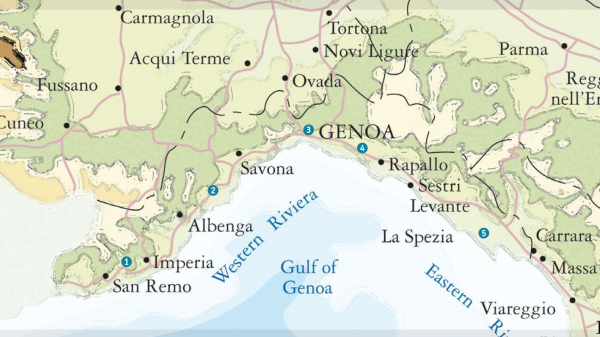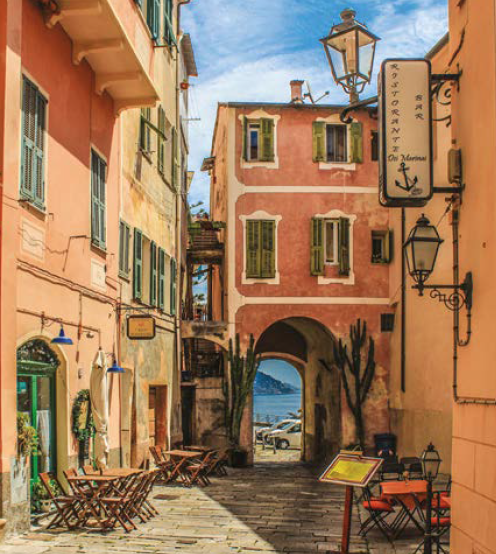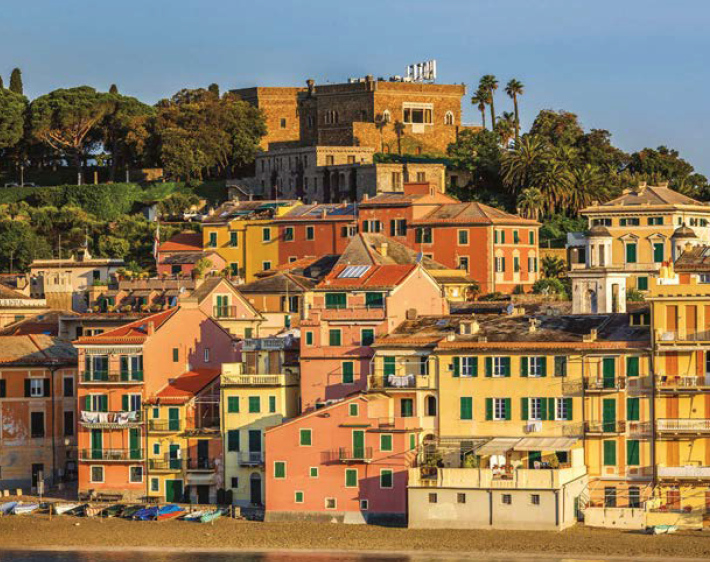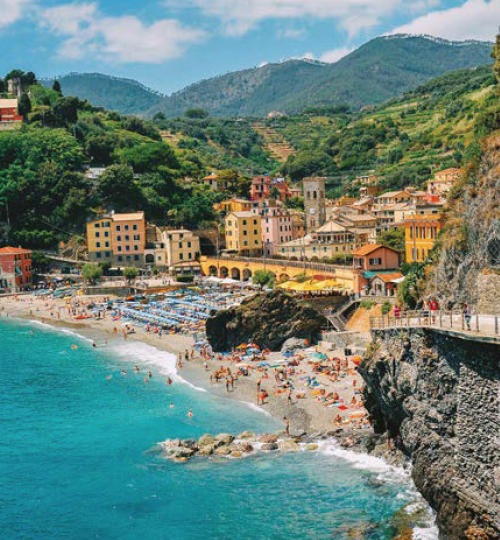Liguria is a beautiful region of Italy famous for its tantalising food, historical port and cliffside villages. Discover more about the amazing coastal region in our regional guide…
Photos by Getty images and iStock
Situated in Italy’s northwest, Liguria is the third smallest Italian region, after Molise and Valle d’Aosta. It borders France to the west, Piedmont to the north and Emilia-Romagna and Tuscany to the east. In the hinterland you’ll find the Ligurian Alps in the west and the Ligurian Apennines to the east. Liguria lies on the Ligurian Sea, with its coastal edge forming the Italian Riviera. The region’s principal source of income is tourism – and this is most obvious on the coast with the presence of chic resorts such as Portofi no, San Remo and the famous Cinque Terre towns. The coastal climate is mild in winter, due to the shelter from the higher ground that sits behind it, with relatively temperate summers.
Around San Remo
Geographically, this area is the immediate neighbour of France’s chic Côte d’Azur. The area along the coast of San Remo is known as the ‘Riviera of Flowers’ and is popular for its artistic heritage, striking architecture and sweeping landscape. Due to the exceptionally mild climate, flowers bloom practically all year round and are cultivated commercially all around the area. There are three main towns to look out for. Ventimiglia is famed for its ‘Battle of the Flowers’ festival in June every year, and neighbouring Bordighera is a favourite winter resort, especially for British visitors and retirees. Undoubtedly the most picturesque of the three is San Remo, an elegant, slightly faded town set on a large sweep of bay.
Imperia to Savona
Head east from San Remo and you enter the ‘Riviera of Olives’, where the landscape is dominated by groves of the characteristically gnarled and silver-leaved olive trees. The most famous olive groves in Liguria are found at Dolcedo, inland from the coast, where they produce a delicious olive oil. On the coast itself, Imperia is a busy port with an attractive centro storico. The city was created during the Mussolini era from two existing towns, Porto Maurizio and Oneglia. Heading east from here, the sandy beaches continue, dotted with a succession of family resorts, many retaining historic elements such as age-old palazzi and medieval torri. The contemporary-looking town of Savona was largely rebuilt after the second world war, and is really more of a working city than a resort, although it still boasts a Renaissance cathedral right at its heart.
Genoa
Genoa, ‘La Superba’, is the capital of Liguria. It is Italy’s second largest port, after Gioia Tauro, and has been a trading post for over 1,500 years. The city has an illustrious history of power and wealth that stretches back to Etruscan times. Since the early 1990s Genoa has been revitalised by big investment and has developed a little of Marseille and Barcelona about it – as a rakish port that is swiftly improving. Its architecture is diverse and the city is proud of the redevelopment of its porto antico and centro storico. As one of Italy’s major economic centres, the city is also rich in art, gastronomy and music, and was an EU Capital of Culture in 2004.
East of Genoa
Geographically, Genoa marks the dividing line between the gentle landscape of the western coast and the rugged scenery of the east. No longer an area of sweeping soft and sandy beaches, the coves of the east are smaller and rockier, but are no less popular. A little further east is the beautiful village of Portofino, its vibrant buildings clustered around the tiny harbour. Fishing has long since ceased to be its main industry and instead it has become a mecca for tourists, on and off shore. Despite its ever-increasing popularity this village retains its air of tranquillity. Sandy shores return at Chiavari (famous for lace and silk manufacture), Lavagna with its gorgeous, long, straight beach, and Sestri Levante, a favourite among Italians. Inland you’ll find a luscious green landscape dotted with quaint Italian towns. Varese Ligure is worth a visit and is famous for the borgo rotondo, a circular piazza where summer operas are held.
La Spezia and Cinque Terra
Following round to the furthest corner of the Ligurian coast you’ll find La Spezia, a modern town with a large naval base. It sits on the edge of the Parco Nazionale delle Cinque Terre (the Five Lands). The five villages of the park – Monterosso al Mare, Vernazza, Corniglia, Manarola and Riomaggiore – are carved out of the steep hillsides. Rainbowcoloured dwellings are constructed on terraced plateaux that teeter right to the edge of the soaring cliffs. This arresting sight has made the area a UNESCO World Heritage Site that is very popular with tourists, who come to walk the paths and admire the landscapes and seascapes. The picturesque train ride that runs the length of the coast is a hugely popular tourist attraction too. Near La Spezia is Porto Venere, another favoured spot on the must-visit map, admired for its ancient Roman gateway – as is chic and historic Lerici with its castle, marina and beaches.
Liked this regional guide to Liguria? Read more about the region here.




